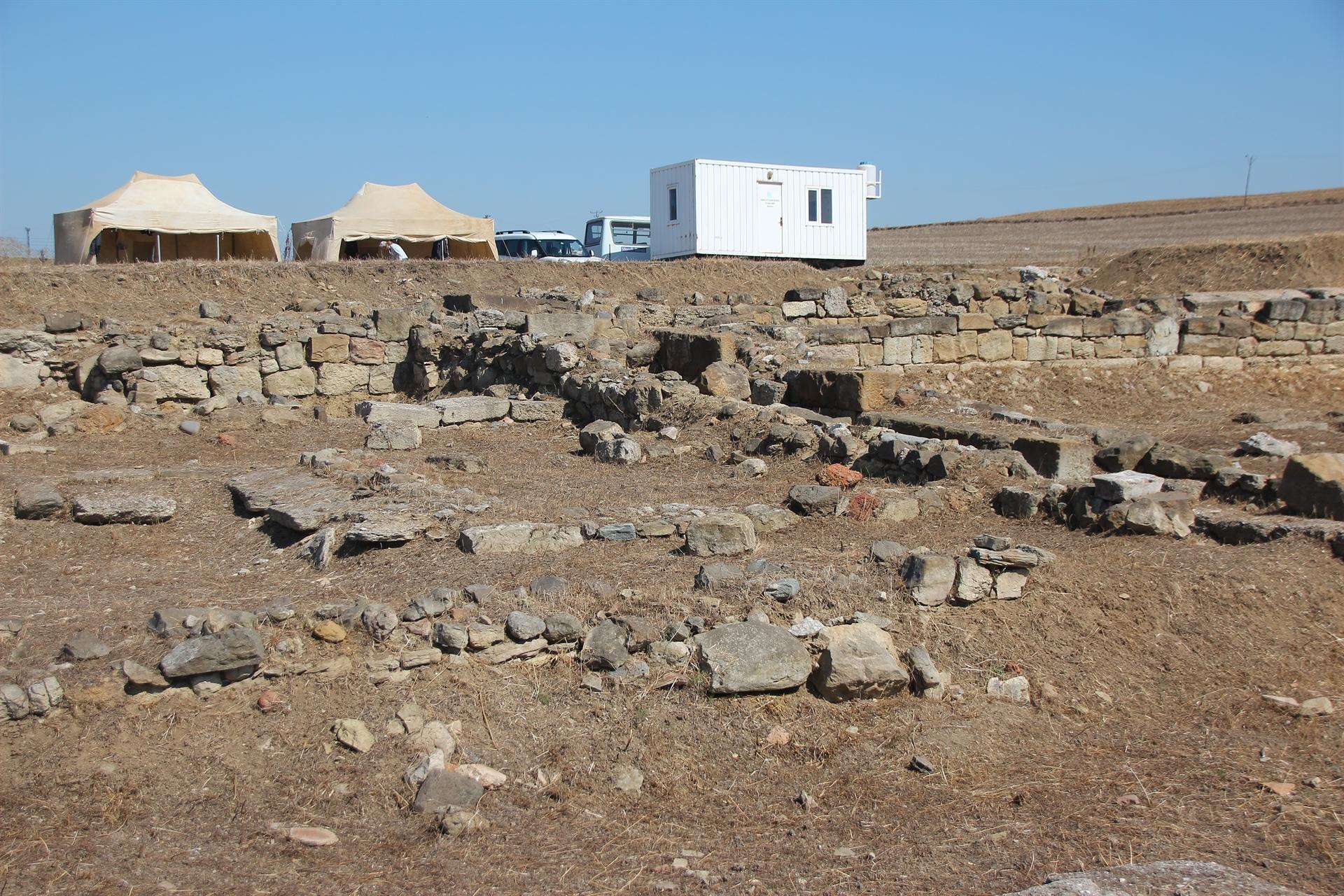
Excavations to be carried out in the ancient city of Heraion-Teikhos, which has traces of the Thracian civilization, in Süleymanpaşa district of the northwestern province of Tekirdağ, aim to reveal the health and cult centers of the Thracians.
Headed by Tekirdağ Namık Kemal University (NKU) Head of Archaeology Department Professor Neşe Atik, the works that have been continuing since 2000 in the ancient city, also known as “Hera,” located in the Karaevli neighborhood.
Speaking to the state-run Anadolu Agency, Atik said that Thrace was home to many different civilizations but has more traces of the Thracian civilization.
Stating that Turkey is the meeting point of civilizations, Atik said that as a result of any excavation work, this situation becomes more apparent.
She said that the excavations in Tekirdağ gave information about the Thracians’ medical methods and religious beliefs.
“Even the first excavations showed us that this is a very interesting ancient city. This is a settlement belonging to the Thracian civilization. One can say that the current excavation is the one and only Thracian city excavation in Turkey. Our excavations showed us that there was a very important cult center here. The first is the ‘Hera-Kybele Cult Area,’ which gives the city its name, and the second is health-related, an area where Asclepius, the god of health, was blessed,” Atik said.
Emphasizing that they found medical instruments belonging to the Thracian period, Atik said, “In this area, we encountered very interesting findings regarding the production of drugs. We found medicine as well as medical instruments such as a hook, spatula, needle, tweezers, ear spoon, double fork. We understand from the products of terracotta that the sick organs were dedicated to the god of health. In the last two years, we have seen traces of a very large structure. It is possible that this is a temple. Perhaps this is a building related to the temple. This year, we aim to illuminate the cult and health center.”
Atik pointed out that they found traces of the castle of Thracian King Kersobleptes during the works.
She stressed that Kersobleptes was the king of the Odessa family in the Thracian kingdom, adding, “He is also the last free king. King Kersobleptes fought with Philip II, the father of Alexander the Great, relying on the castle we are now in, and lost this war. The tomb of Kersobleptes is very typical, very splendid, with an original height of 21 meters. There were very rich finds. There are two gold crowns in the Tekirdağ Archaeology Museum. Parts of his dress were found.”
Atik also explained that they found a grave where two people were buried side by side in the excavations.
She said that there were two pits and two terracotta covers on the grave and added, “This is very interesting because ancient writers say Thracian men were polygamous. They say that when a Thracian man died, all his wives wanted to go to the grave with them. Such a grave has never been found before. I asked the colleagues who excavated in the Thracian cities. They said they had never seen a grave like this before.”
She added that the excavations were carried out under the supervision of a representative of the Ministry of Culture and Tourism and that they received support from the municipalities.
The Thracians, who were influential in the Balkan region between the Danube region of Romania and Thrace between the sixth and third centuries B.C., are a semi-resident people and did not leave any written sources behind them.